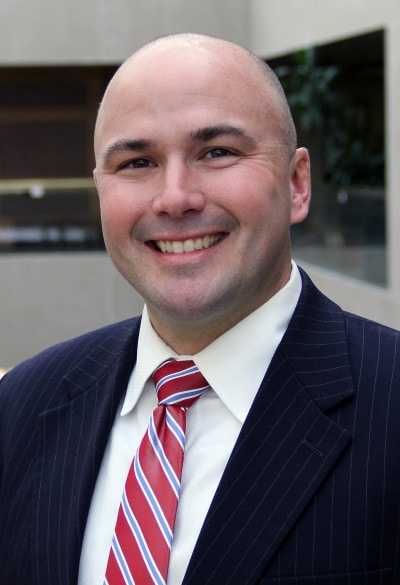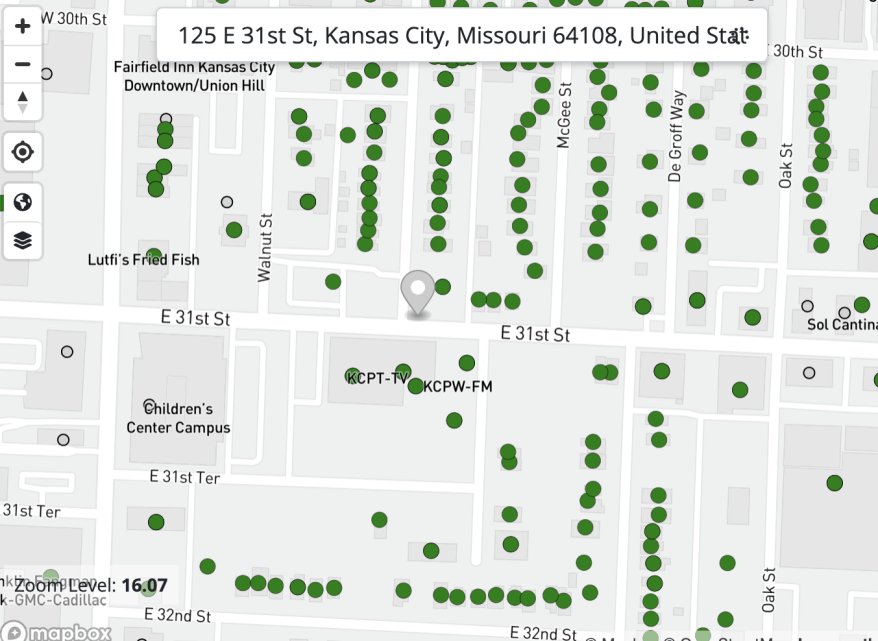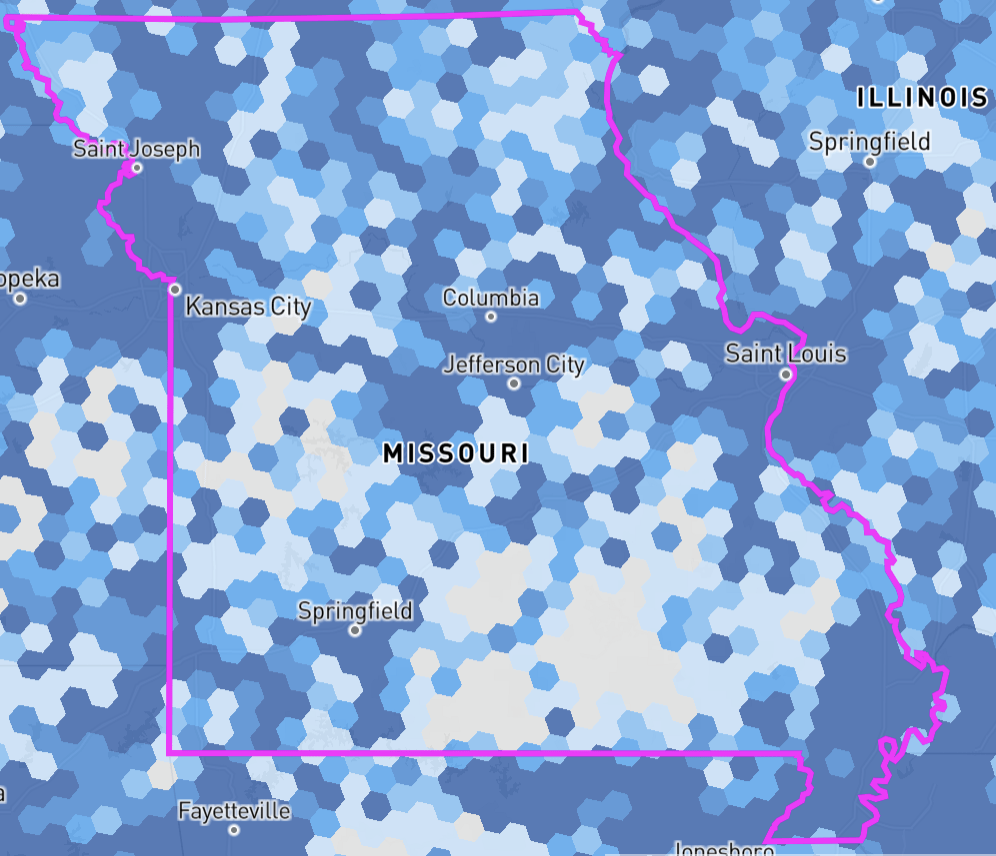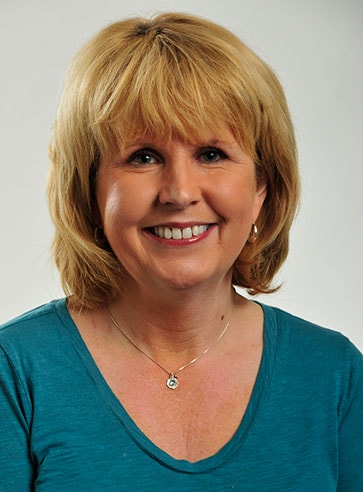Broadband Expansion is About to Boom, But Citizens Need to Speak Up ‘More of an Opportunity Than Ever’
Published December 21st, 2022 at 6:00 AM
Above image credit: Someone who has lost connection to the internet holding a smartphone. (Adobe)Missouri has seen millions of dollars in funding for broadband expansion projects in the past.
But this year, the Show Me State has already been awarded several hundred million dollars for broadband expansion, and it’s slated to receive even more.
BJ Tanksley, the director of the Missouri Office of Broadband Development, said this is in part because internet connection is now viewed as a public utility.
Education, work, entertainment and even health care are now all tied to the internet, making broadband connection immensely important to the family home.
“It’s very much a utility at this point that everybody expects to have access to,” Tanksley said.
Yet, millions of Americans are either underserved or unserved when it comes to broadband connectivity, according to the Federal Communications Commission.
With additional funding in the pipeline, Tanksley said Missouri has “more of an opportunity than ever” to get every home online.
To achieve that lofty goal, though, people need to speak up.
Folks across the country are being asked to weigh in on the Federal Communications Commission’s new National Broadband Map. The more accurately a location is shown as unserved, the more funding the state receives.
Broadband Piggy Bank
Funding for upcoming broadband expansion will come mostly from two federal programs.
The American Rescue Plan Act (ARPA) already awarded $265 million to the state of Missouri to be used as broadband infrastructure grants.
ARPA funding is awarded to service providers that submitted grant proposals to the Office of Broadband Development. Grant winners are expected to be announced this week.
The office scores the projects based on things like budget, the number of people served and the location.
“We want to make sure that our funding is bringing new connections and not overbuilding areas that already have service,” Tanksley said.

To the same end, Tanksley said when the office sees an underserved area with no applicants, it will reach out to nearby providers and see if they are willing to expand there.
“That is a very real situation,” he said. “There are some areas that have multiple providers applying, and there’s some that nobody’s applying for the funds available.”
Grant money is distributed as a reimbursement. Tanksley said extensive reporting that service providers must submit throughout the buildout.
“There’s so much funding going into broadband right now that we have to make sure we’re being careful about it,” Tanksley said. “We want to know how many miles of service are being made available, how many new connections have been made, and … also to make sure that these projects are staying on timeline.”
Jason Conley, a managing partner of Liberty Link in Holden, Missouri, won grant money in 2020 through the Emergency Broadband Investment program.
“Overall, it was a pleasant experience,” he said. “And you know, the town of Holden obviously benefited from that, as well as us.”
But Conley didn’t apply for the upcoming ARPA funding.
To him, the grants favor larger companies rather than small, local companies like Liberty Link, which serves rural communities in west central Missouri.
“The grant process is pretty intensive, especially for a small company,” Conley said.
His company only has three full-time employees, none of whom are trained in grant writing or legal jargon to the same level someone might be at a larger company.
“There’s 100% there’s no way for us to compete with the big boys when it comes to government grants,” Conley said.
He said it can be “demoralizing” when a big company wins a grant to expand in Liberty Link’s area. While the grant programs allow smaller companies like his to challenge these awards, he said it’s still just too much paperwork for something he likely won’t win.
“We know all of our customers on a first name basis … we spend time while we’re outside doing installs to help people connect their devices and teach them things,” Conley said. “(So) we feel more crushed when there are grants that are being awarded in our area that we just have no way to compete with.”
Conley was firmly against government grants, but did say he saw value in funding “middle-mile” projects. A middle-mile project would bring fiber connectivity to a small town and then companies like Liberty Link could take it the “last mile” – to the locations around and outside of the town.
Broadband Dot Map

Federal dollars are coming to Missouri to fund middle- and last-mile projects.
The other big chunk of broadband funding up for grabs comes through the Infrastructure Investment and Jobs Act, (IIJA) also known as the Bipartisan Investment Act.
Of the $65 billion destined for broadband expansion through IIJA, $42.45 billion will be allocated to U.S. states and territories, based on need. The rest will go to various programs helping to advance community connectivity, telehealth opportunities, digital equity and to an internet subsidy program.
According to the National Telecommunications and Information Administration, each state is eligible for a minimum of $100 million. Additional funding for each state will be awarded based on the number of unserved and underserved locations.
To assess the need in each state, Congress tasked the Federal Communications Commission (FCC) to create more accurate maps of broadband availability.
Your Participation Matters
Previous FCC maps tracked broadband coverage by census block. This data wasn’t specific, and often made it look like an area was connected when in fact part of the census block didn’t have access.
The new broadband deployment map is a response to those critiques. Now users can zoom into individual addresses to look at connectivity.
The speeds and connection availabilities shown on the map were determined by the highest advertised services to a location. The FCC predicts some discrepancies between advertised and actual connectivity, and opened a challenge period from now until Jan. 13.
The Missouri Office of Broadband Development is encouraging all Missourians to access the map and verify the connectivity information, or challenge it if it is incorrect.
“We don’t know the exact funding that we will receive for our Connecting All Missourians campaign, but we do know it will be even larger than the current ARPA program,” Tanksley said.
Watch on YouTube: How to Challenge Location or Access
Each and every dot on the map counts.
In a Connecting All Missourians public webinar, Adam Thorp, the Office of Broadband Development’s community development director, said each unserved dot on the map accounts for around $5,000 in funding.
Thorp encouraged folks to focus on challenges that will affect the amount of funding the state will receive.
Important challenges are locations that don’t appear on the map and locations that are listed as having adequate internet, but don’t have those speeds available.
Looking at the map, Thorp said, there are a lot of locations that sit on the lines of underserved or unserved.
“These are locations where a single challenge, if a provider is incorrectly reported … a challenge at these locations, would shift them into that other category,” Thorp said. “They’re making it easier for us to provide funding to that location.”
Unserved locations are areas with speeds of less than 25/3 megabits per second (Mbps). Underserved locations have speeds less than 100/20 megabits per second.
Missouri Broadband Coverage

Thorp said it’s important to adjust the filters when looking at the map. He advised people to select “all wired and licensed fixed wireless” and the upload/download speeds indicating either underserved or unserved.
Without these adjustments, the map shows a country with 100% connectivity. This is because it shows satellite connections which could reach these locations, but in most instances don’t have the capacity to do so.
There’s a relatively short window to get the word out and the maps corrected, and millions of dollars are on the line for each state. Neighboring Kansas felt the map was “grossly inadequate” according to a recent article in the Kansas Reflector.
Tanksley with the Missouri Office of Broadband Development said his office sees some inaccuracies the map, which is why he is pleading with Missourians to log on and look.
“We see the irony in it, to try to ask people that don’t have connections to get on a connection,” Tanksley said. “So we wanted to make sure we had a local connection available to help anybody troubleshoot it, or that truly needs that connection to be able to do it.”
The office has partnered with the University of Missouri Extension to make the process more accessible. Folks are able to visit the FCC map site at their local extension office if they are unable to access it from their home or work.
Tanksley advised Missourians to look at their own addresses and the locations they’re familiar with, and then to tell their neighbors to do the same.
“Every single dot will count,” Tanksley said. “We will be counted based on the needs of Missouri, versus the needs of the nation.”
A Connected Missouri
ARPA and IIJA funding will roll out in various phases over the next 3-5 years.
“Over time, there will be fewer and fewer fundable locations with the hopes that eventually you get to the point where all of the red dots are now green and have service,” Tanksley said. “The day where everything is green may be several years away, but…we’ll make a big swing for it.”
Access is one of the biggest issues when it comes to broadband, but not the only angle to keep in mind.
Alison Copeland, the deputy chief engagement officer for the University of Missouri System, works to connect the resources and knowledge of the University of Missouri schools to communities across the state.

“Our role as a university is to partner with communities and bring to the table the things that universities have that can help address the challenges,” Copeland said.
The system’s Resource Rail offers everything from an internet speed assessment to information on the federal Affordable Connectivity Program, which subsidizes internet for those who qualify for Women, Infants and Children (WIC), Supplemental Nutrition Assistance Program (SNAP), or other such services.
“That federal Affordable Connectivity Program, that’s the biggie right now, something that is really being pushed and encouraged,” Copeland said.
The program would bring internet into households for as little as $30 a month, and would offer a stipend for the purchase of a household device. Funding for the program also comes from the IIJA.
“A lot of people will speak about broadband as the modern day utility, like electricity and water and things that we don’t even think twice about now,” Copeland said. “Folks without it are marginalized by that definition, further marginalized.”
Both urban and rural households struggle to afford internet, but Copeland said it can especially affect rural areas because of the low return service providers have to expand into rural, versus urban areas.
“The level of investment for an internet service provider to go into a sparsely populated area is limited because they’re not going to make money off that,” Copeland said. “There just won’t be as many take rates because there just aren’t as many people.”
Copeland said big grant funding like this allows for expansion into rural areas of the state without as much overhead.
Aside from connectivity and ARPA and IIJA funding, it’s also important to educate folks on internet connectivity and get them equipped to take advantage of broadband.
Some folks are still hesitant to adopt internet in their homes. Copeland said the Missouri System’s new digital ambassadors program will help these individuals set up a computer or connect to services like telehealth.
“The new wave of internet availability through all of the grant funding, that’s one thing,” Copeland said. “But helping people know how to and fully realize the breadth and depth and value of further accessing the internet to increase quality of life, that’s what the digital ambassadors will do.
“This is a really exciting time to really move the needle in broadband access across the state,” Copeland said
Cami Koons covers rural affairs for Kansas City PBS in cooperation with Report for America. The work of our Report for America corps members is made possible, in part, through the generous support of the Ewing Marion Kauffman Foundation.


